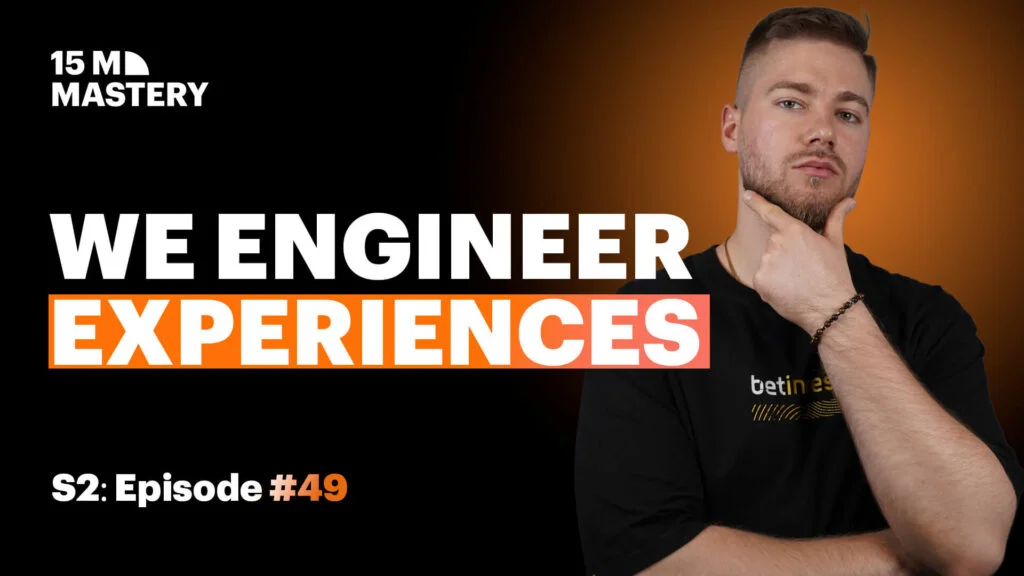Engineering for Pressure, Not Scale: How Betinvest Builds Sportsbook Infrastructure for Growth
Dmytro Matiukha, CEO of Betinvest, joined 15M Mastery to unpack how his team is building modular infrastructure that meets the real-world demands of operators, not theoretical ideals.
With a background in both strategy and technology, Dmytro’s leadership has steered Betinvest into becoming a lean, product-led provider with resilience and relevance at its core.
From cultural localisation to disciplined innovation and test-zone product deployment, this conversation reveals how Betinvest balances agility with accountability in every line of code.
Don’t Scale Your Org Chart, Scale Your Output
For Dmytro, the idea of scaling isn’t about hiring more people. It’s about expanding impact.
“Scaling is not about growing headcount,” he says. “It’s about scaling value output per engineering unit, per API call, per content drop.”
That mindset changes everything. Betinvest avoids unnecessary hiring and vertical sprawl by designing modular systems that flex only when needed. They focus on uptime stability, not team size, and only scale infrastructure when partner-side pressure demands it.
“When the pressure hits, we scale precisely, horizontally and in modular bursts,” Dmytro explains. “Not with panic hiring or chaotic vertical sprawl.”
Every internal decision runs through a tight operational loop: partner volume leads to low forecast, which leads to infrastructure stress test, which leads to resource alignment. If there’s no pressure, they don’t build.
Customisation Isn’t a Feature, It’s a Business Case
Betinvest’s approach to feature development is grounded in economic logic, not assumptions.
“If you want divergence from core products, you fund it either as a direct dev cost or via shared commercial upside,” Dmytro says. “Otherwise, we operate on what we call a standard with flavour model.”
That model is based on one thing: behavioural segmentation. Before building anything, the team analyses usage curves, drop-off rates, and cohort behaviour. If a feature makes sense for a user group, it gets built. If not, it stays parked.
“Operators who skip this step aren’t scaling,” he says. “They’re guessing.”
Localisation Begins With Cultural Immersion, Not Translation
Betinvest localise for their clients’ end users, not B2B clients.
“It’s not just about translating the interface,” Dmytro explains. “It’s about cultural immersion built into the content, the trading model and the user journey.”
That means adapting trading parameters to local behaviour, matching formats to cultural norms, and even questioning whether a user in São Paulo or Jakarta would engage with a particular feature.
He points to Betinvest’s AI-powered football product as an example: built specifically for LATAM markets with tailored narrative, visuals and logic.
“In 2025, the main takeaway is simple,” he says. “Not words, but relevance.”
Trends Are Not Trophies, They’re Tools for Retention, Margin, or Scale
While many suppliers chase AI, Dmytro’s team runs every trend through a single filter: will it improve retention, margin, scalability or engagement within 90 days?
“If the answer is clearly no, it’s just noise,” he says. “We’re not chasing the buzzwords. We’re precise, we’re constant.”
One notable example: Betinvest dropped a full exclusivity deal with a global feed provider when it compromised adaptability, even though it offered locked-in reliability.
“If it doesn’t serve the roadmap, the user, or the monetisation model, we pass.”
Test-Zone Innovation Protects Stability While Enabling Speed
New features at Betinvest don’t go live unless they pass through a stress-tested rollout zone. Dmytro calls it a “brutal but simple model.”
“80% of traffic is routed to our stable core. The remaining 20% is routed to our test zone, where controlled risk is accepted.”
This lets the team ship fast, test fast, and fail safely, without impacting live partners.
“If a new feature compromises performance, it’s not a feature,” he says. “It’s a bug in disguise, and we kill it on sight.”
Content Rollout Follows the Netflix Model: Drop by Impact, Not Schedule
Rolling out new sportsbook content isn’t a back-end task, it’s a full product supply chain.
Betinvest uses RTMP streams for real-time distribution, event-based OCR or ML depending on the discipline, AI-powered quality control, and a marketing-ready framework that integrates into UX and promotion layers.
“Each rollout follows our ISO-grade launch protocol,” Dmytro says. “No delays, no data gaps, no downstream surprises.”
The mindset is borrowed from Netflix. “We drop content by slot, by demand profile, and by expected impact,” he explains. “We don’t release content, we release value.”
From strategic restraint to test-driven speed, Dmytro Matiukha’s leadership model offers a blueprint for sportsbook providers navigating today’s complex, fast-moving landscape.
By rejecting bloated operations and staying obsessively focused on relevance, Betinvest continues to prove that less can scale, when done with precision.


